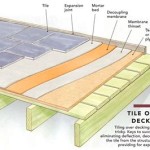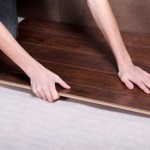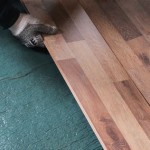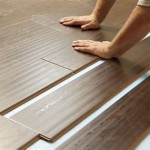The Difference Between Engineered Wood and Solid Flooring: Cost and Considerations
When embarking on a home renovation project, flooring choices play a pivotal role in defining the aesthetics and functionality of a space. Engineered wood and solid wood flooring are two popular options, each offering distinct advantages and drawbacks. Understanding the differences between these materials, particularly in terms of cost, is paramount in making an informed decision. This article delves into the key distinctions between engineered wood and solid flooring, highlighting their respective characteristics, cost considerations, and suitability for different applications.
What is Engineered Wood Flooring?
Engineered wood flooring comprises multiple layers of wood veneer bonded together. The top layer, known as the wear layer, is typically made of a hardwood species such as oak, maple, or cherry, providing the visual appeal and durability. Beneath the wear layer lie multiple layers of plywood or other engineered wood, which provide stability and structural support. This construction technique allows for the production of thinner planks, making engineered wood flooring more stable and less prone to warping or cupping compared to solid hardwood flooring.
What is Solid Wood Flooring?
Solid wood flooring, as the name suggests, is crafted from a single piece of hardwood. Its thickness varies from 3/4 to 5/16 inches, depending on the specific species and intended application. The entire plank is made of the chosen hardwood, providing a uniform appearance and a natural feel. Solid wood flooring offers greater durability and can be refinished multiple times throughout its lifespan, allowing for a timeless aesthetic that can evolve alongside the homeowner's tastes.
Cost Comparison: Engineered vs. Solid Wood Flooring
One of the most significant factors influencing flooring choices is cost. Generally, engineered wood flooring is more affordable than solid wood flooring. This difference in price stems from various factors, including material costs, manufacturing processes, and installation requirements. Engineered wood flooring's construction, which utilizes multiple layers of wood and plywood, inherently reduces the amount of solid hardwood required, translating into lower material costs. Additionally, the thinner planks of engineered wood may allow for more efficient installation, potentially reducing labor costs as well.
Solid wood flooring, on the other hand, entails higher material costs due to the use of a single, thicker piece of hardwood. The intricate process of milling and finishing solid wood planks also contributes to its higher cost. Additionally, the installation of solid wood flooring can be more complex and time-consuming, as it often requires nailing or gluing the planks to a subfloor. The higher initial cost of solid wood flooring should be weighed against its longevity and potential for refinishing, which can extend its lifespan significantly.
Key Points of Comparison
Durability and Refinishing
Engineered wood flooring is generally more durable than laminate or vinyl flooring, but it is less durable than solid wood flooring. Its wear layer is typically thinner than solid wood, limiting the number of refinishing cycles. Solid wood flooring, however, can be refinished multiple times, restoring its original appearance and extending its lifespan. This feature makes solid wood flooring a better investment for homeowners who prioritize longevity and the ability to adapt the flooring to changing styles and preferences.
Stability and Warping
Engineered wood flooring is less susceptible to warping and cupping compared to solid wood flooring. This stability stems from its multi-layered construction, which offers greater dimensional stability and resistance to moisture fluctuations. Solid wood flooring, with its single plank construction, can be more prone to warping or cupping in humid environments or with significant changes in temperature. However, advancements in manufacturing and finishing techniques have reduced the risk of warping in solid wood flooring.
Installation and Maintenance
Engineered wood flooring is generally easier to install than solid wood flooring. Its thinner planks make it more manageable for DIY projects, and it can be installed over a variety of subfloors, including concrete. Solid wood flooring often requires specialized skills and tools for installation, and it may necessitate the removal of existing flooring and the installation of a moisture barrier before laying the planks. Both engineered and solid wood flooring benefit from regular sweeping and vacuuming to remove dust and debris. However, solid wood flooring may require additional maintenance such as periodic refinishing to preserve its appearance.
Environmental Impact
Engineered wood flooring, with its layered construction, generally utilizes less solid hardwood than solid wood flooring. This can translate into a lower environmental impact, particularly if the wood used in the engineered flooring is sourced from sustainable forests. However, the use of adhesives and plywood in engineered wood flooring raises concerns about potential chemical emissions and environmental footprint. Solid wood flooring, if sourced responsibly, can be a more environmentally friendly option due to its use of a single piece of hardwood and its potential for multiple refinishing cycles, prolonging its lifespan and reducing the need for replacement.
The choice between engineered wood and solid wood flooring ultimately depends on individual preferences, budget, and the specific needs of the project. Both options offer distinct advantages, and careful consideration of factors like durability, stability, installation complexity, and environmental impact is crucial in making an informed decision.

Engineered Wood Vs Hardwood What S The Difference

Hardwood Vs Engineered Wood Flooring Which Is Better Bessemeter

How To Choose Between Engineered Solid Wood Flooring Adige Design

Engineered Wood Flooring Vs Solid Forté

Engineered Hardwood Vs Laminate Flooring

Blog Engineered Vs Hardwood San Marcos Tx Quality Floors More

Engineered Hardwood Vs Vinyl Differences Cabinets Core

Engineered Wood Flooring Vs Solid Which Is Best Step Into Style The Ultimate Guide To

Engineered Hardwood Vs Solid Wood Flooring Pros And Cons

Engineered Wood Vs Plywood Mdf Hdf Mccoy Mart
See Also







